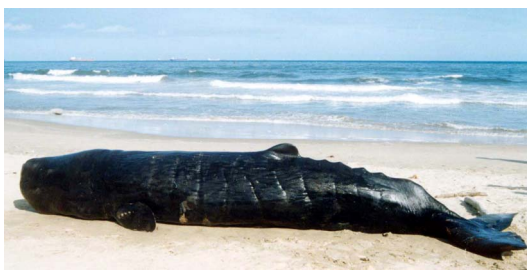Arabian sea is rich in bio- resource and offers enormous food (most important are squid and shrimp) to hungry whales and dolphins. The tip of southern India has lush growth of seagrass where the sea cow Dugong dugong show their dominance. The Andaman and Nicobar group of Islands is another paradise for sea cow. Here is one very informative book released by Central Marine Fisheries Research Institute on the marine mammals species in India. Certain NGOs are also working on the conservation of dolphins and sea cows.
There are 31 species of marine mammal in India, which includes thirty species of Cetacea and only one species of Sirenia. Research on marine mammals in India is still in its juvenile stage due to lack of funds, international corporation and sophisticated technology.

This is a picture of baby sperm whale, Physeter macrocephalus, 4.4 meter long, which was entangled in a trawl net at 20 meter depth near Marina beach, Chennai. It was abandoned by the fisherman, later found stranded near the coast on January 21st, 2002. The dead whale was later buried in the nearby beach by Zoological Survey of India and the skeleton of this whale is kept in the museum.





Comments